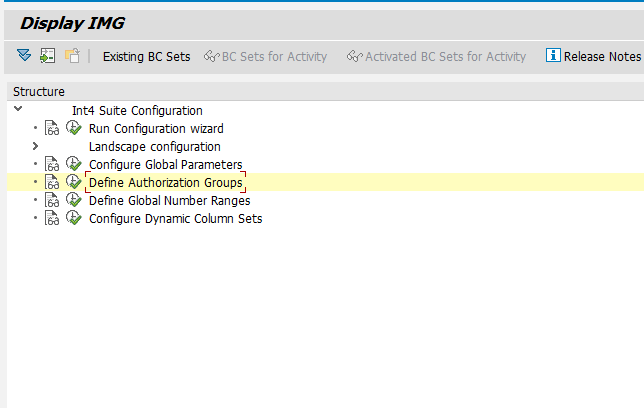Content-level authorizations
Authorization Groups in Int4 Suite provide granular control over access to objects like Test cases, folders and automation objects. This feature is crucial for ensuring each team maintains a secure and independent workspace when collaborating on shared testing systems.
These groups control access only for objects with an Authorization Group assigned or inherited. Objects without an assigned group are considered open and accessible to all users. For more information on general authorizations, please refer to Authorizations.
🔐 Key Concepts
Int4 Suite uses a new authorization object: /INT4/AGR. This object represents an authorization group within the SAP system and is checked whenever a user tries to perform an action on content with an assigned Authorization Group.
✅ How Authorization Works
When accessing or modifying an object, the system performs the following checks:
Authorization Group Assignment: Authorization Group assignment methods vary by object type: some are assigned directly, while others are inherited from parent objects. Details for each object type are provided below.
User Action Validation: The system evaluates the action the user wants to perform (e.g., Display, Edit, Execute).
Role Authorization Check: The system compares the Authorization Group and action with the authorizations assigned to the user’s roles.
Assignment Restrictions
Users can only assign or unassign Authorization Groups that they are already authorized to access. If a user doesn't have permission for a specific group, they won't be able to apply it to any object.
👤 Who Can Manage Authorization Groups?
Only users with the administrator role (/INT4/IFTT_ADMIN) can define Authorization Groups.
Navigation: Use the Int4 Suite IMG
Transaction Code:
/INT4/IFTT_IMGActivity: Define Authorization Groups

Administrators can:
Create new Authorization Groups
Maintain group descriptions
For an overview of available role templates, visit: Int4 Suite Role Templates
What’s Next?
In the upcoming subsections, you will discover detailed, object-specific guidance on utilizing Authorization Groups with:
